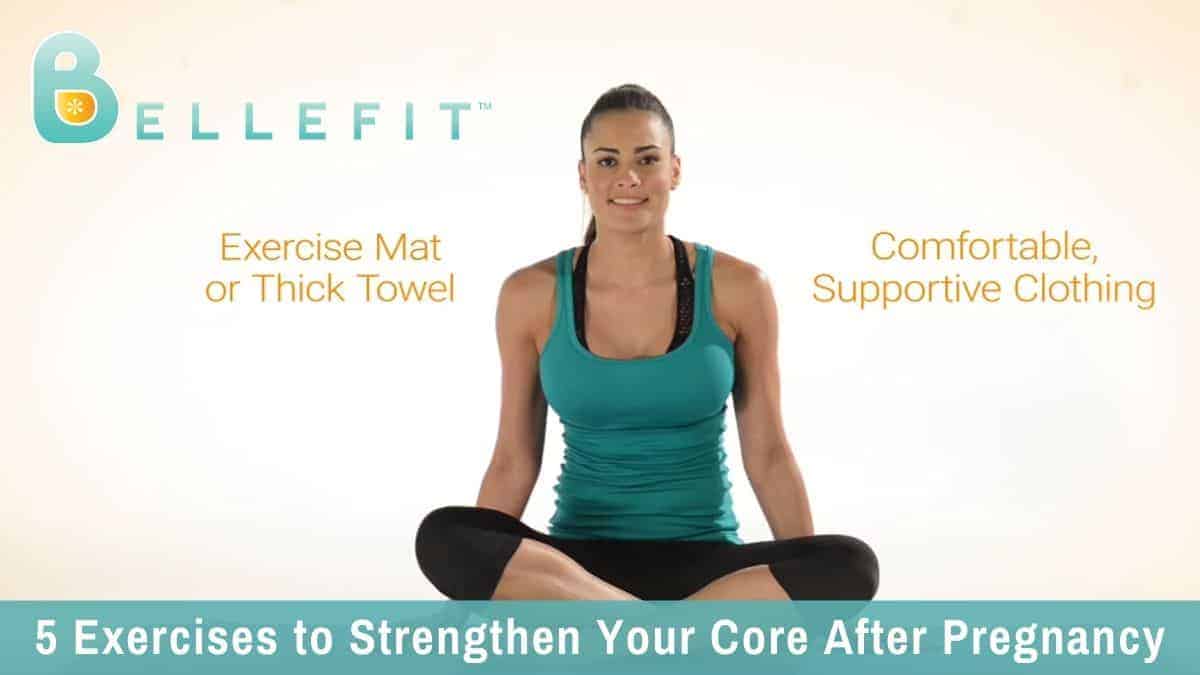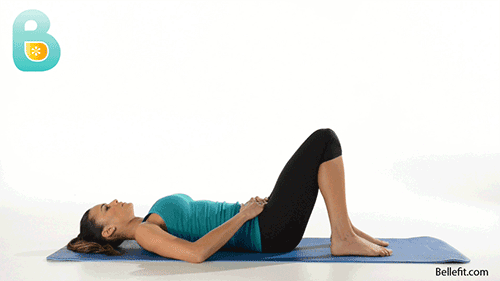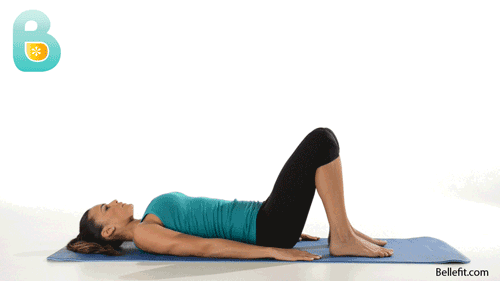My Cart(0)
5 Exercises to Gradually Re-Strengthen Your Core after Giving Birth

Pregnancy demands a lot from your body. It's not uncommon for many women to experience a significant loss of core strength post-pregnancy.
The physiology of growing a baby is not kind to your midsection. Your muscles and connective tissue stretch to accommodate your baby, compromising the tone and strength in your torso.
When most people think of their core muscles, they picture the six-pack abs (rectus abdominis), but your core includes multiple muscles that wrap around your torso from the top of your ribs cage and include your pelvic floor.

These muscles work together to protect your internal organs, stabilize the spine and pelvis, and powers your mobility. Your core muscles are also what connects your upper body and lower body, and it's activated in all exercises.
In this article, we'll talk about common signs of a weak core and 5 safe exercises for the postpartum body that help you rebuild your strength to relieve pain.
- Signs Of A Weak Core
- Back Pain
- Poor Posture With A Tendency To Slouch
- Anterior Pelvic Tilt
- You Need Assistance Standing Up
- You Find It Difficult To Balance
- Is It Safe To Do Ab Exercises After Giving Birth?
- 5 Gentle Postpartum Exercises To Increase Core Strength
- 1. Deep Belly Breathing
- 2. Pelvic Bridge
- 3. Bent Leg Raises
- 4. Horizontal Forearm Plank
- 5. Side Plank
- Video Guide Of The Five Exercises Plus Two Bonus Exercises
- Bonus Exercise Tip: Wear An Abdominal Binder
Signs Of A Weak Core
Back Pain
One of the functions of the core is to support the spine. If these muscles aren't strong enough to support your spine, you risk straining and overworking other muscle groups. Lower back aches can flare up while you're sitting or standing for a prolonged time.
Poor Posture With A Tendency To Slouch
Is it challenging to maintain good posture when you're sitting or standing?
While a weakened core isn't the only contributing factor to poor posture, having a strong core can significantly improve your posture. Bad posture can have negative impacts on the rest of your body over time by messing up its natural alignment leading to pain and injury.
Anterior Pelvic Tilt
Pregnancy weakens the core, especially the pelvic floor and the abdominal muscles, which can affect the posture of the lower spine. Because of these muscle groups quickly become compromised during pregnancy, it's common to see an anterior pelvic tilt in women post-pregnancy, where your pelvis tilts forward, causing a c-curve dip in your lower back.
If the anterior pelvic tilt is not corrected, it can lead to lower back and hip pain or injury.
You Need Assistance Standing Up
Because our core is foundational to our trunk movements, everyday tasks like getting out of bed or getting up from your chair can be a challenge if you lack the core strength.
If you find yourself always reaching for a brace to hold on to when you go to stand up, strengthening your core is the answer.
You Find It Difficult To Balance
Balance and core strength are intimately linked because your core's job is to stabilize the body. If you find it challenging to balance on one foot or uneven terrain, this may be a result of a weak core.
By toning the core, you can significantly improve your balance and increase your athletic performance over time. After all, the foundation of all movements stems from your trunk.
Do all these signs sound familiar after giving birth? To new moms, this may seem very overwhelming. Luckily, you can regain your core strength back gradually with gentle yet effective, targeted exercises.
Is It Safe To Do Ab Exercises After Giving Birth?
Before you get started on ab workouts, be sure to get the green light from your doctor. The last thing you want to do is cause an injury that slows down your postpartum recovery, especially if you have diastasis recti or had a c-section delivery.

While c-section deliveries are common, it's still major abdominal surgery that will require a more extended recovery period than vaginal birth. The last thing you want to do is compromise your incision by straining your body before its ready to exercise.
Toning your core is a lot more than focusing on your abdominal muscles — you want to approach your stabilizer muscles as a whole to strengthen the connective tissue and increase your range of motion.
The following post-pregnancy workouts are an excellent introduction to restrengthening your postpartum belly.
Start with short sets of 1 or 2 and 10 reps of each exercise and work your way to 3 or 4 sets as you regain strength.
@setswithsam Have y’all hoped on this? 😮💨#tiktokfitness #corestrengthening #fitmom #abworkout ♬ Fire - Official Sound Studio
5 Gentle Postpartum Exercises To Increase Core Strength
1. Deep Belly Breathing

This exercise targets your diaphragm, which sits at the base of the chest and is mainly responsible for expanding the chest cavity for breathing.
The diaphragm works with your abdominal muscles and pelvic floor to provide stability to the trunk of your body.
Let's walk you through this exercise:
- Lie comfortably on your back on a yoga mat or towel, with your knees bent and feet flat on the floor
- Take a long slow breath through your nose to fill up your lungs
- Place one hand on your chest and the other on your belly button to feel the chest and belly expand with air
- With control, exhale through your mouth and feel your stomach and chest sink closer to your spine as you expel all that air
- Start with a count of four for your inhales, pause at the top of your breath, and exhale for four breaths — You can slowly build on the lengths of your breaths with practice
This exercise is gentle on the postpartum body and offers many benefits to your overall health, including:
- Reduces stress and anxiety levels by lowering cortisol levels
- Improves lung capacity
- Strengthens abdominal and pelvic floor function
- Lowers heart rate
- Lowers blood pressure
2. Pelvic Bridge

The pelvic bridge and the deep belly breathing exercise will be familiar to you if you've done yoga before.
The bridge or setu banda Sarvangasana is a foundational backbend yoga posture that strengthens the lower back and hip muscles and lengthens the abdominals.
We'll walk you through how to activate the targeted muscles correctly:
- On a yoga mat, lie on your back with your knees bent and feet flat on the floor (you should be able to graze the heels of your foot with your fingertips)
- With your arms extended at your side and your palms flat on the floor, lift your pelvis towards the ceiling and peel your lower spine off the floor
- Your shoulders neck and head should remain grounded on the floor and keep your chin close to your chest
- Avoid having your knees splay out in this position, dry to draw them in together — if you have a yoga block, you can place it between your legs and squeeze to activate your glutes and hip flexors to lift your pelvis higher
- If you have the flexibility in your shoulders, you can bring your hands to a bind behind you and inch your shoulders closer to the midline of your body
- Hold this position for three full breaths, and with an exhale, gently roll your body back to the floor and repeat
The bridge pose is a gentle exercise to lengthen and strengthen the muscles that support the spine. It's an excellent exercise to start the day because activating the spine feels energizing and rejuvenating.
3. Bent Leg Raises

Bent leg raises can start to feel spicy for your lower abdominals and hip flexors, so only start this exercise with the approval of your doctor.
By targeting the lower abdominals and hip flexors, you'll alleviate lower back pain that tends to compensate when these muscles aren't strong enough to support you.
The straight leg raise variation of this exercise demands a lot from your lower abdominal muscles, so this modification is an excellent way to build up to the full movement to avoid injury.
- On a mat, lay on your back with your arms by your sides and your knees bent and feet flat on the floor
- Engage your core by drawing your belly button in towards your spine and raise one leg towards your chest
- Bring your leg back to the original position and switch legs
- Don't rush this movement. You'll get more benefits by slowing down raising and lowering the legs to engage the stabilizing muscles
- When you're ready to progress in this exercise, try lifting and lowering both legs at the same time
- As you tone these muscles, you'll eventually work your way to straight-leg raises for a killer ab-exercise
4. Horizontal Forearm Plank

This exercise is one of the most effective exercises for building full-body strength and toning the upper back and shoulders. It's the ultimate total body-weight exercise to build strength.
Don't be discouraged if you find this posture challenging to hold — We'll walk you through a modification to start that you can build up to the full progression.
- Start in a tabletop position — your shoulders directly over your wrists and your hips in line with your knees
- Now, come onto parallel forearms for more stability
- Next, walk your knees back to form a straight line from your knees to your neck
- Keep your belly button pulling towards your spine and avoid your butt sticking up towards the ceiling — you want to keep that straight line from your knees to your neck
- You should feel your shoulders, abdominal muscles, and pelvic floor engaged in this exercise
- Hold for 30 seconds and don't forget to breathe
- Challenge yourself by coming off your knees for three breaths, you can always return to the knees bent position its too straining on your body
- When you're comfortable staying in the full posture off your knees, try holding this posture for 1 minute
If you have diastasis recti, you should avoid this exercise as it can increase the visible coning of your abdominals. You should reach out to a physiotherapist who specializes in treating postpartum diastasis recti for a more personalized exercises.
5. Side Plank

The side plank is another effective full-body exercise and an excellent complement to the forearm plank. This posture tones your obliques (love handles) and shoulders.
We'll get into the modification and the progressions of this exercise.
- Lie on your side with your legs fully extended and your forearm supporting your upper body (make sure your shoulder is in line with your elbow)
- Raise your hips off the floor until your body forms a straight line from your shoulders to your ankles
- Imagine your body is between two panes of glass — avoid hunching over your shoulders and expand through your chest
- If you're feeling strong enough, lift one leg towards the ceiling
- Hold the side plank position for 30 seconds
- The next progression is coming off your forearm and balancing on your hand
- This is a tricky pose for balance, so our tip is to focus your gaze on an unmoving object and to remember to breathe evenly
Video Guide Of The Five Exercises Plus Two Bonus Exercises
Bonus Exercise Tip: Wear An Abdominal Binder

Choose an abdominal binder designed for women's postpartum recovery. Your waist trainer or postpartum girdle should be made from comfortable, breathable fabric and provide high-grade medical compression.
It should fit snugly to squeeze in your belly and straighten your spine for good posture, but make sure it's not too tight that it restricts your breathing.
Wearing an abdominal binder provides your core with extra stability and eases strain off of your back and pelvis. Moms find that they were able to get to their abdominal exercises sooner wearing a postpartum girdle, and it made their workouts much more comfortable.
Post-pregnant moms swear by their Bellefit abdominal binders for helping them regain their pre-pregnancy bodies. Our postpartum garments are FDA-approved and doctor recommended to help women speed their post-pregnancy comfort in style.
If you want to get toned abs after having a baby, get to these abdominal exercises as soon as you get the green light from your doctor with the help of a high-quality postpartum girdle. Training, along with a nutrient-dense diet, and stress management, will get you back to your pre-pregnancy body.
unsubscribe at any time without costs.











